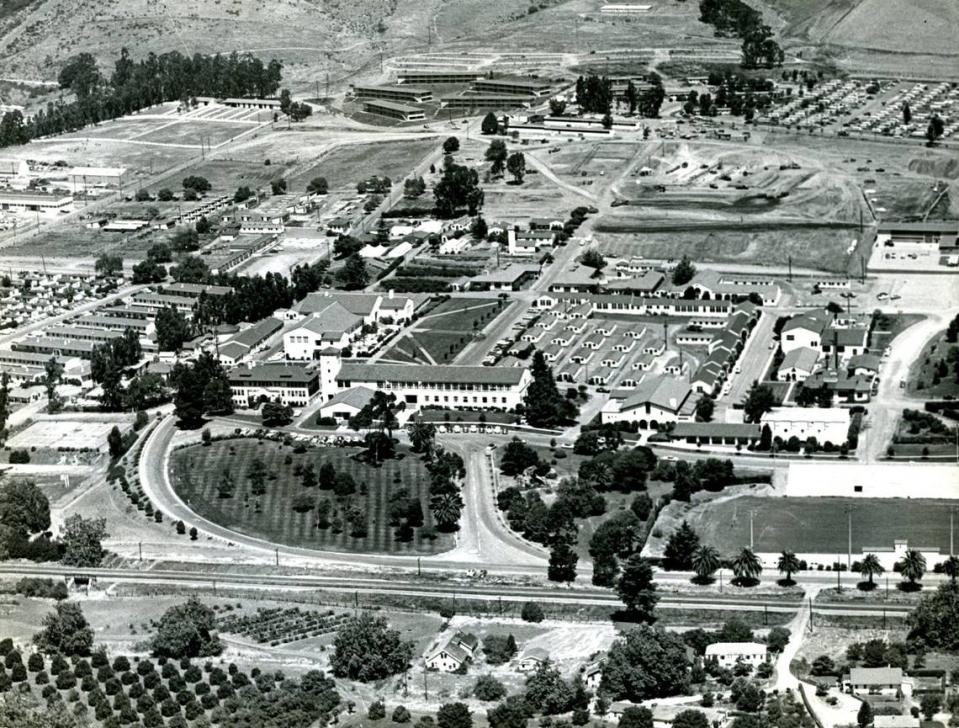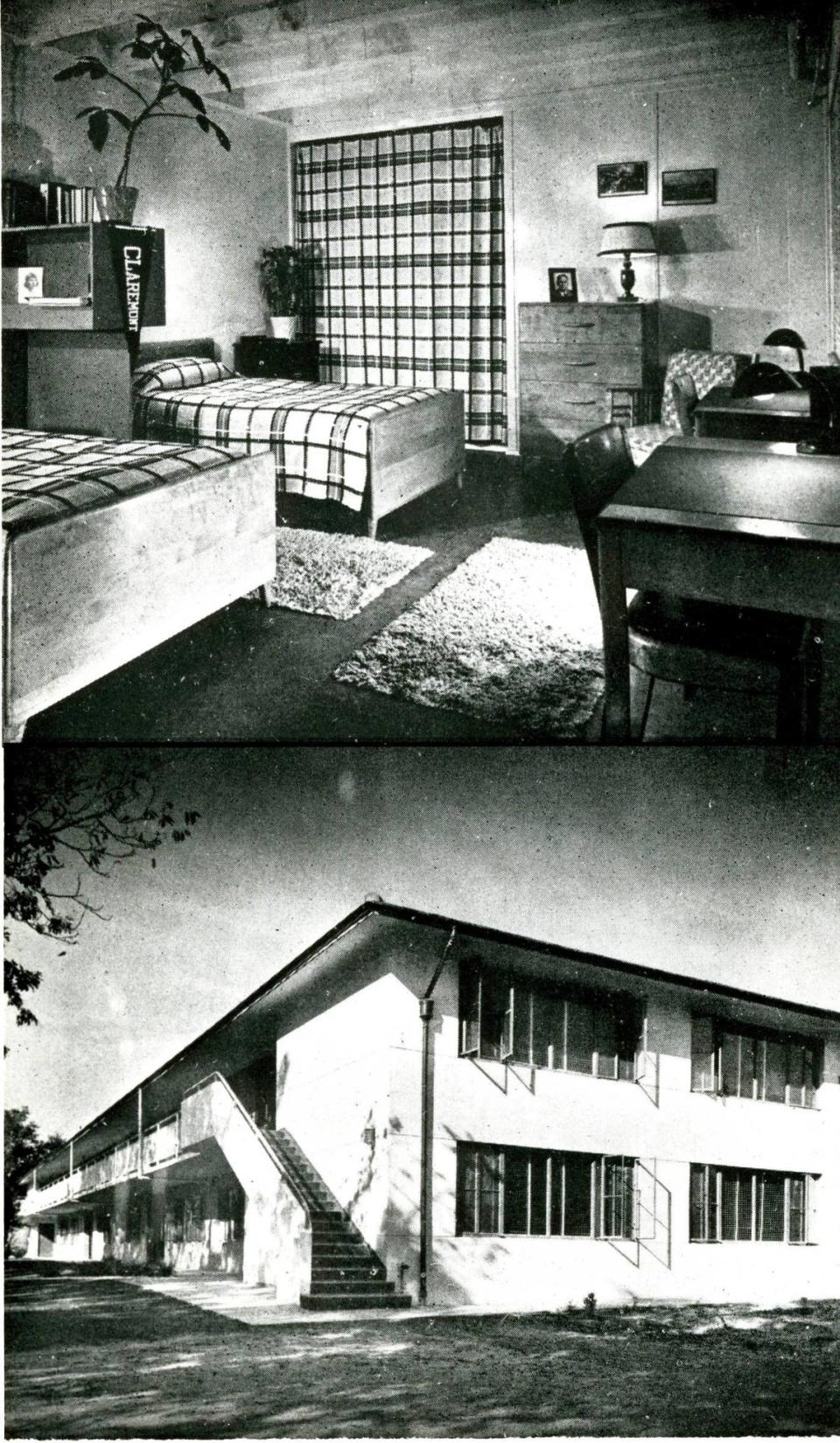These Cal Poly dorms were built in ‘race against time’ in 1950s. Now, it’s ‘their time to go’
Here’s a puzzler: Why did a photo of one of the Cal Poly dorms in the 1950s show it decorated with a Claremont College pennant?
Let’s turn the clock back and unravel the mystery.
Cal Poly has been trying to catch up to demand for student housing since the 1940s.
A recent story outlines a plan for 3,000 new beds that involves bulldozing the North Mountain Residence Halls and building on the parking lots for the South Mountain Residence Halls (also known as the red bricks).
When the North Mountain dorms were built, it was a major departure from the campus layout.
The dorms were on the edge of campus and replaced an old horse barn and poultry runs. This construction would begin the march uphill from the core campus buildings over the next decades.
Historically, Cal Poly had been operating on a shoestring budget through the Great Depression and was faced with the threat of closure from an unsympathetic legislature. They even closed enrollment to women at one point.
But enrollment tripled with thousands of returning World War II veterans, and in 1949 enrollment stood at 2,909 students.
Colleges had both high school graduates and military veterans all in need of diplomas as well and California’s explosive post-war population boom.
Cal Poly scrambled to find places for the influx of students to live.
The last time dorms had been built on campus was over two decades earlier — in 1928-31 — with Jespersen, Heron and Chase halls.
A series of temporary efforts were made.

Vetville was a complex of wood cottages built in 1946. Photos from that era show young families and laundry hanging from clotheslines.
Up the hill, 188 silver trailers were parked. Often the veterans came with young families, and the housing was named “Silver City.”
In September 1951, the state board of public works authorized $108,200 for four more emergency student housing units for 224 students. These four dorms units were to go near Vetville.
A total of 1,201 students were housed on campus, 961 single and 240 married, according to a March 29, 1952, Telegram-Tribune article.
But clearly something more was needed.
School officials were pleading with San Luis Obispo residents to rent spare rooms to students.

As Cal Poly celebrated its 50th anniversary, a desperation pitch was made for funding and plans were found for an already constructed dorm at Claremont College in Pomona.
This explains the promotional photo in The Tribune files of a completed building, not a model, with the Claremont pennant on the wall of the student dorm.
The North Mountain dorms were named for California peaks: Shasta, Diablo, Palomar, Whitney and Lassen.
The initial budget was $750,000, but with plumbing, electrical and heating added in, the cost was closer to $1 million. It was hoped the dorms would be open in 180 days.
It was a “race against time,” builder Ted Maino said at the time, because they were facing a very specific challenge: The Korean War had reactivated Camp San Luis Obispo, and students that had been housed in the hospital section there now had to move out.

An article published during the North Mountain groundbreaking on July 13, 1951, said some students were moved into the now-forgotten Buffalo and Catalina dormitories, which may have been the names of the temporary dorms.
The steel-reinforced concrete dorms had a Southern California vibe. Hallways were eliminated in favor of exterior walkways.
Each two-story building had 16 rooms on each floor with individual outside entrances, and each room had direct access to a bath.
Rains slowed construction, but they opened in September 1952. Telegram-Tribune photos from the opening showed the students moving into the dorms that ended up costing about $250,000 per building.
The big, windowed rooms were popular, but the expansive lawns and small capacity of the buildings is out-of-step with the higher density of current construction.
“The next step will be tearing down North Mountain,” Keith Humphrey, the university’s vice president for student affairs, said in a recent Tribune report. “Those are our oldest dorms on campus, and it’s now their time to go.”
Now 71 years after they first opened to students, the days are numbered for the venerable North Mountain Residence Halls — once the product of a race against time.


